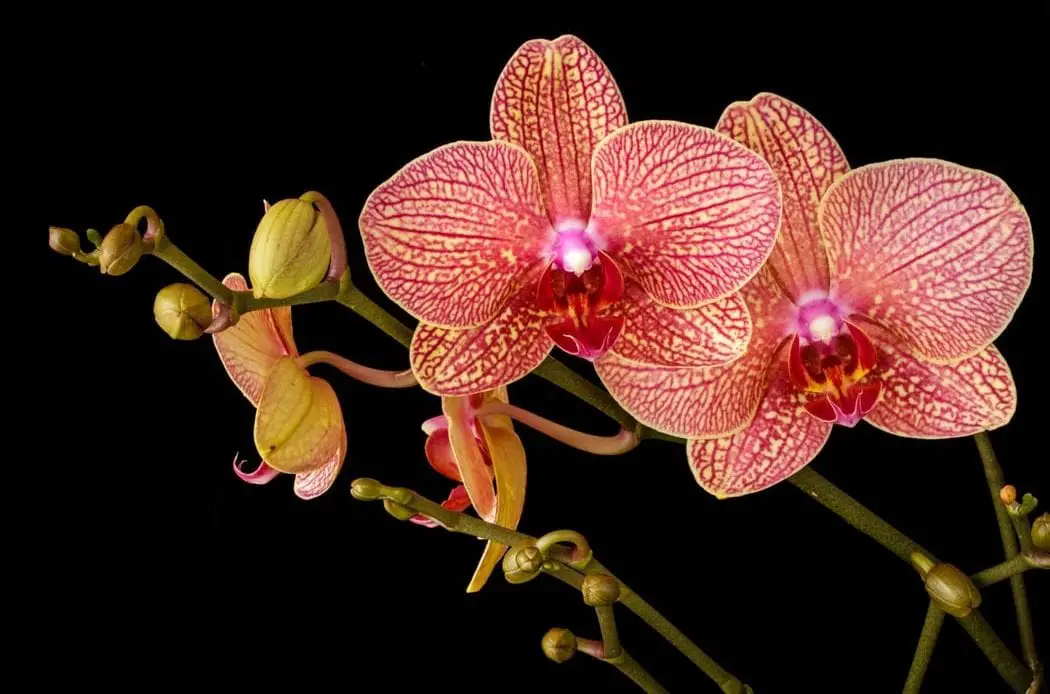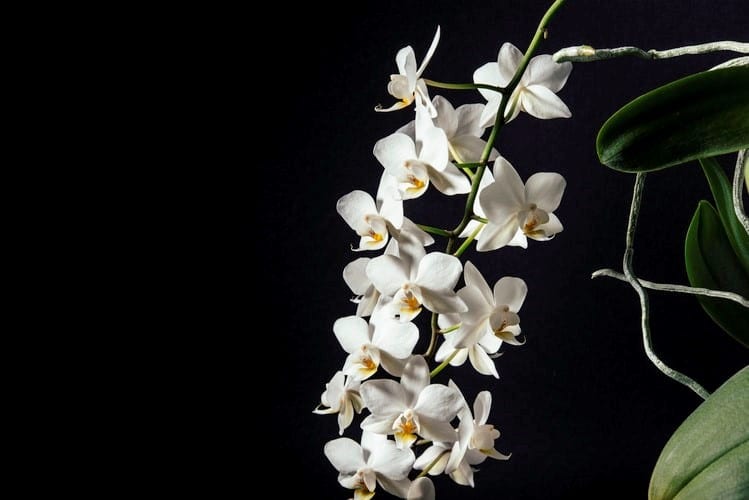
There are over 26,000 species of Orchids. Looking at their stunning flowers, it may seem difficult to take care of them but it is not so. Orchids are not that delicate and a little knowledge about how to care can keep them thriving for long. Here is a detailed write-up on how to take care of an Orchid plant.
Like all plants, Orchids too need a growing medium like water and sunlight to survive. They are excellent blooming plants and can bloom for several months in a year. If you are new to Orchids, well, you have no reason to worry. They are different but not difficult to handle, as said earlier. Orchids can be good houseplants too, even as some of them are semi-terrestrial and grow on forest lands.
Primary requirements of an Orchid plant
· Orchids need not be watered every day. Water them once a week. Remember, too much water can cause their roots to rot.
· Orchid plants require a good amount of sunlight. Ensure to place them facing east or west, so they receive ample light and warmth of the Sun.
· Use a fertilizer especially made for Orchids. Again, do not overuse; once in a week is sufficient.
· If your Orchid plant stops blooming, you should understand that it is time to re-pot.
How to take care of an Orchid plant: Other Requirements
Diverse Needs
Orchids are a large family with over 800 different types called genera and 26,000 species. So, it is difficult to chart out general guidelines when it comes to taking care of them. While some Orchids are tropical and need strong trees for support, several others are rock plants and grow well on rocks. There are Orchids that grow on land as well. However, a small percentage of the Orchids are widely grown and only a few of them are available at a nursery. The Orchids you get at a florist shop or nursery are mostly hybrids, developed by crossing species and breeds to attain desirable characteristics in color, fragrance, ease of care and size.
If you adore Orchids and looking to grow a couple of the widely grown species at home, you can do so with the least effort. Go through the paragraphs below if you want to know more about how to take care of an Orchid plant.
Orchid Mix
There are many orchid mixes available on the market but the best one contains special medias that make room for excellent airflow. It is to be noted here that orchids need special media to grow and survive, they cannot withstand dirt. A heated home in Florida is quite different from a sun porch in New Jersey, however with appropriate care, an Orchid can survive in both the environments. A good orchid mix comes with multiple media, where each ingredient adds desirable characteristics. An airy and open orchid mix provides the right amount of moisture. Understand the water retention capacity of your orchid and choose an orchid mix that aligns with the same. Bark chips and Sphagnum moss are the most commonly used potting mixes.
Using Orchid Pots
Orchids that grow in jungles are free and their roots breathe easy. What do you think the plant feels when you try to grow it in your pot? While most potted plants are judged by their leaf growth, for Orchids, it is their roots that matter. Healthy orchid roots indicate healthy plants. So, if the roots start growing outside of your pot, let them be. Make sure you do not smother the roots. In other words, you need to attain the perfect moisture balance to grow good orchids. It is for this reason many orchid growers use white or clear pots. While a white pot allows sufficient sunlight to pass through it, supporting photosynthesis, a clear pot allows you to see how well the roots are thriving.
When you are choosing a pot for your orchid, you should go for the one that can hold the roots comfortably. Do not choose a pot that is bigger than necessary. This makes cleaning and handling difficult. Ceramic or Plastic pots add to the beauty of orchids while you can clean and reuse them effortlessly.
Use of fertilizers
Do not use a commonly available fertilizer for your orchids. These plants require special fertilizers, made exclusively for them. Most fertilizers have a common ingredient, the urea, which cannot be well absorbed by the orchids. Moreover, a diluted small quantity is what your orchids need. So, it is ‘weak fertilizer on a weekly basis’. A water-soluble fertilizer with little or no urea is recommended for orchids.
When it comes to how to take care of an orchid plant, there’s one more point to note. You need to water the plants in such a way that they are literally flushed. Their roots should receive oxygen, which can be ensured with the right watering habits and proper orchid mix.
Air Movement and Humidity
Have you ever observed that homegrown orchids are placed in trays? Why do you think so? Well, Orchids, as we told earlier, are diverse and special. These plants need humidity and the trays we talked about are humidity trays that allow water to accumulate at the base. Further, Orchids should be gathered and grown close. A lot of dry air causes the plants to dry out. Moisture and air movement, both need to be balanced if you want your orchids to grow really well.

Light Requirements
Different species of orchids have different light requirements. But please note that even high light orchids don’t need as much light required by an ordinary tomato plant. North window sunshine may be enough for an orchid type to bloom while south shading can be sufficient for some species. Since Orchids are a very large family, a generalization cannot be done. However, most of them require moderate sunlight. If you are growing an orchid plant at home and your place lacks bright sunshine, you are best recommended to use fluorescent bulbs. Lights with high-intensity discharge also work fairly well.
Temperature
This again depends upon the kind of orchids you are growing. While some orchids such as Phalaenopsis grow well in warmer temperatures, some others like Dendrobiums need lesser temperatures to finely bloom. Not all orchids are the same. You need to take some time out to research on the orchids you plan to grow. Most orchids, however, bloom and thrive well under moderate temperatures. If you are wondering how to take care of an orchid plant at home, we suggest you place them near a glass door or beside a window to ensure enough sunlight and temperature. These beautiful plants need neither too hot nor freezing temperatures.
Watering the Orchids
This is the most difficult yet significant part to understand, especially if you are a beginner orchid grower. Simply said, orchids need neither too much nor too little water. They should be watered right. But the question here is ‘What is right’? We will try to explain. The water required by an orchid plant depends upon the kind of orchid, the orchid mix it is growing in and the surrounding environment. As with the other plants, orchids need more water during summer and less during the colder days. You can liberally water your orchid once a week, flush the roots in your sink, allow more air space and check the plant sometime mid-week. This would make a good routine while it allows you to better understand how an orchid grows. Humidity trays can also be used to help you water appropriately.
Simply insert your finger in the potting mix. If you feel the moisture, you can wait for another day or two. If it is dry, you can water the plant right away. On the other hand, if you feel your orchid plant has been over-watered, hold on. Observe for a week or two before resuming watering.
Quickly act if you come across sick orchids
If you see any bacterial/viral or fungal attack, act swiftly. Quickly remove the affected plants to a different area and separate them from the other healthy orchids. You can use cinnamon spray (easily available in grocery stores) over the plants since it is a natural fungicide/bactericide. You can also seek professional services to get rid of the harmful microorganisms. However, if you are unable to help your orchid plants recover, the problem might be something else. The trouble may be beneath the surface, the solution to which is re-potting. That’s right. Re-potting is the only solution if the roots are infected.
To avoid such problems, you can take the following measures:
· Quarantine newly bought orchids for a few days. You can mix them with your collection once you are sure they are healthy.
· Sterilize the cutting tools often.
· Use different gardening tools for affected and healthy orchids.
· Avoid placing orchids with your other houseplants.
Now we hope you have a fair idea of how to take care of an orchid plant. When well-cared for, orchids bloom with exotic flowers for you to take pride in.
